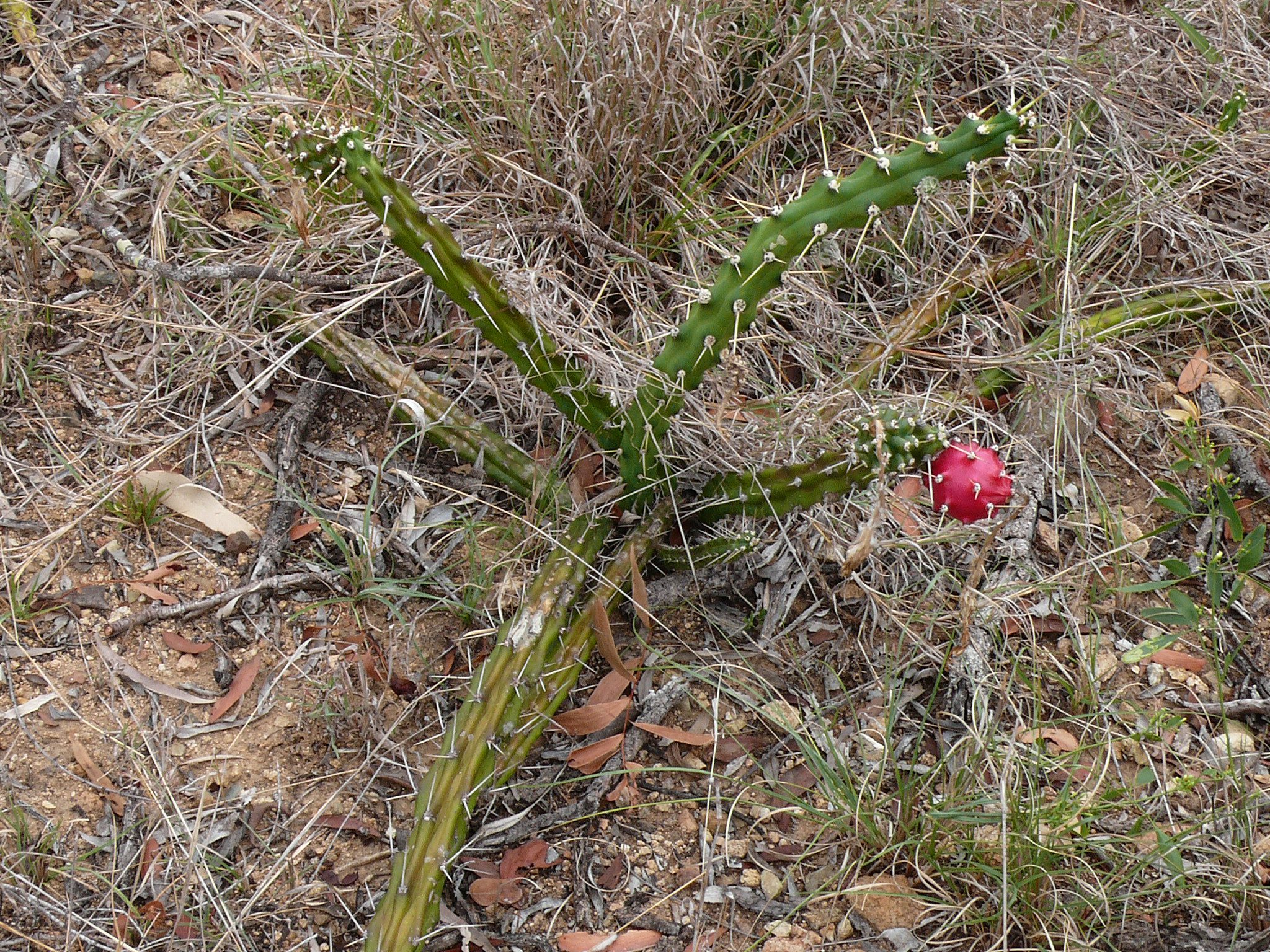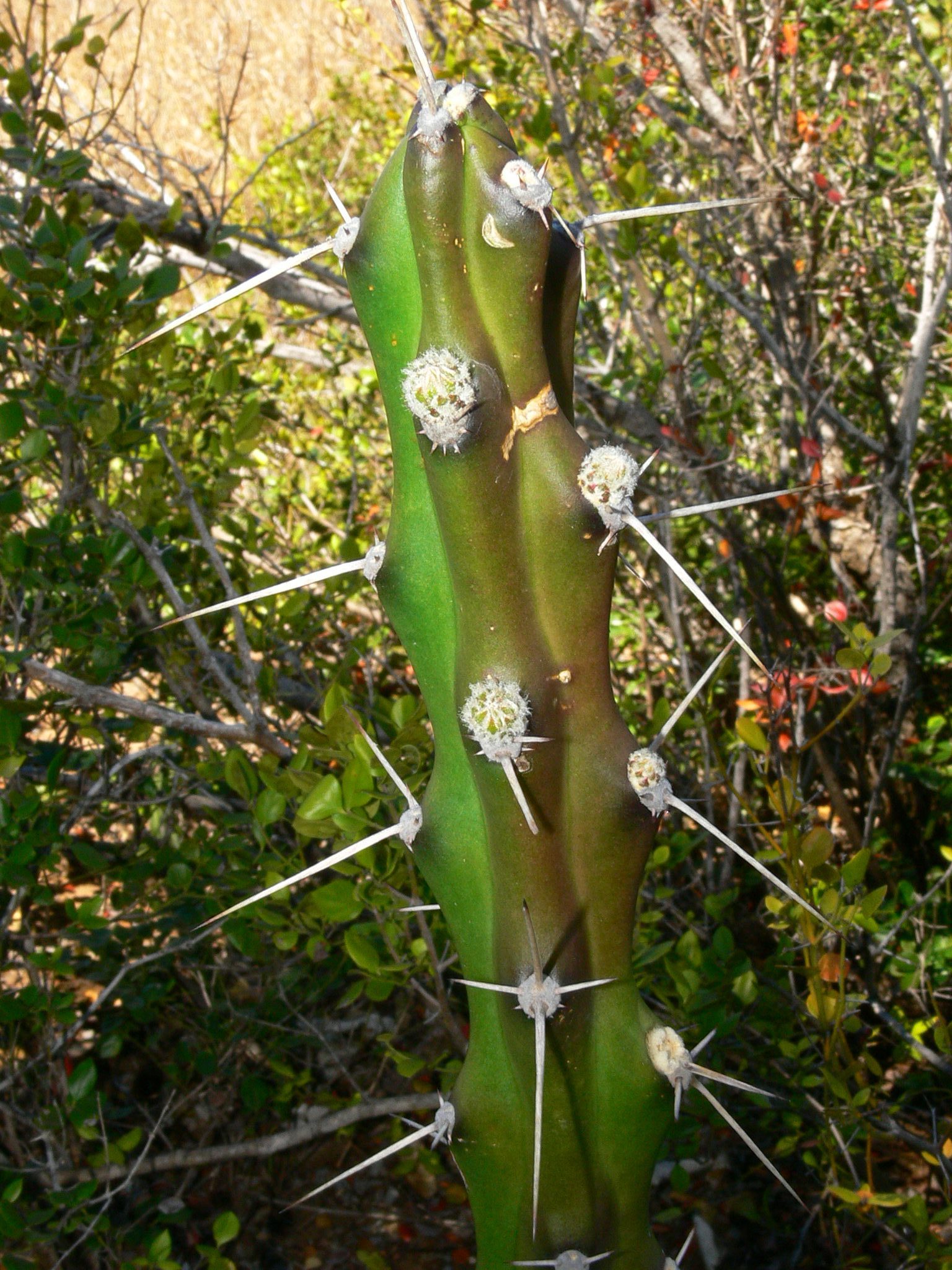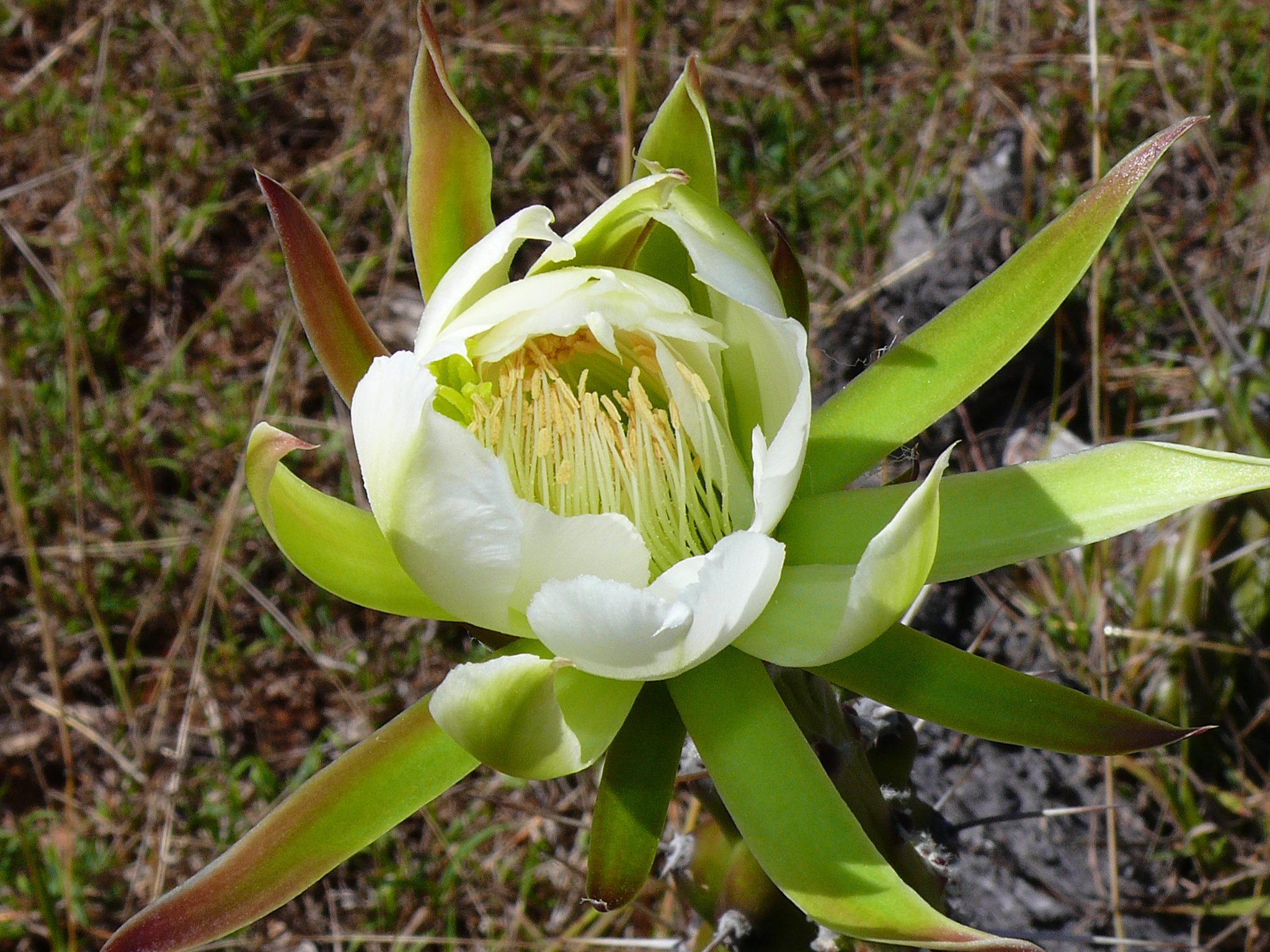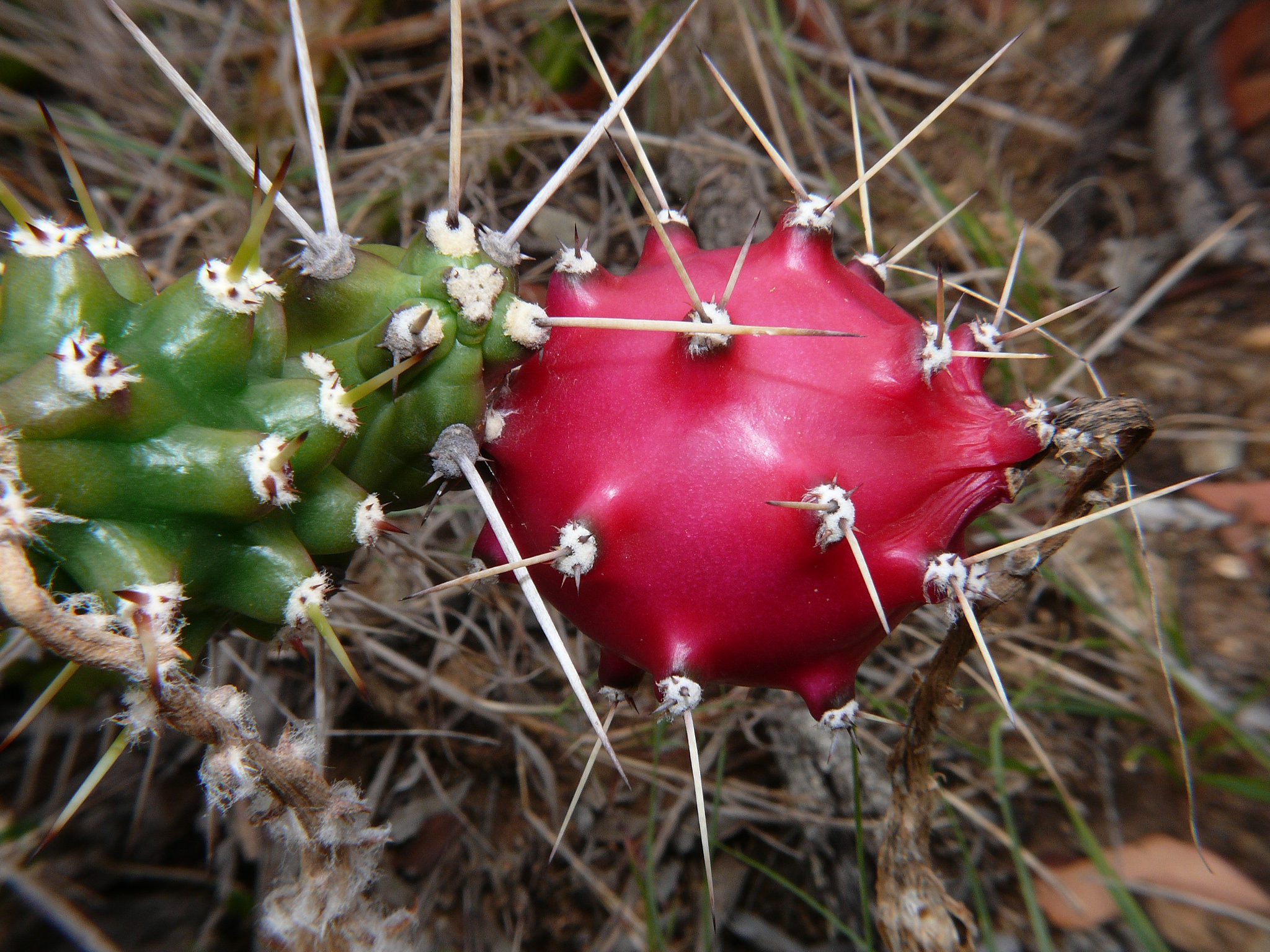Harrisia cactus
Harrisia martinii, Fam. Cactaceae








Perennial, much-branched vigorous cactus. Young stems 5-6 angled ‘warty’ bearing many groups of stiff spines, 10-30mm long. Deep underground tuberous root system. Can form an impenetrable tangled mass as stems take root wherever they touch the ground. Previously Eriocereus martinii.
| Weed Category: |
Restricted invasive plants Category 3 Plants declared invasive under the Biosecurity Act 2014, that are present in QLD.
Not to be distributed or disposed of.
|
| Weed: | Yes |
| Form or habit: | Succulent or cactus |
| Family: | Cactaceae |
| Leaf: | |
| Flower conspicuous: | Conspicuous |
| Flower colour: |
White, Pink |
| Flower description: | Nocturnal, white or pinkish funnel shaped, about 200mm long, borne singly at end of stems on a scaly, spineless slender grey/green tube 120−150mm long. |
| Fruit conspicuous: | Conspicuous |
| Fruit colour: |
Red |
| Fruit: | Fleshy |
| Fruit description: | Round red, fleshy, berries 40-50mm across, with scattered groups of hairs and spines; white juicy pulp with numerous small black seeds. Fruits split when mature. |
| Habitat: | |
| Distribution | |
| Food source for: | |
| Toxicity: | No toxicity known |
| Origin: | Argentina and Paraguay |
| Notes: | Spread by: seeds spread by birds and animals; small portions of stems, underground tubers or the numerous dormant underground buds all capable of growing. Invades/threats: grassland, pastures, open forest and some coastal communities. Notes: introduced as a garden ornamental, shade tolerant; now widely naturalised, especially in drier areas of Queensland. In this region, populations are known in the Greenmount area and northern Whitsunday coast. Dense infestations choke out pastures making them unfavourable to stock. Sharp spines interfere with operations eg. mustering. Harrisia spp. are Category 3 restricted invasive plants under the Biosecurity Act 2014, it must not be given away, sold, or released into the environment without a permit. The Act requires everyone to take all reasonable and practical steps to minimise the risks associated with invasive plants and animals under their control. This is called a general biosecurity obligation (GBO). |
| Information sources: | Mackay Regional Pest Management Group (2018) Weeds of the Mackay Whitsunday Region Second Edition. |